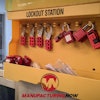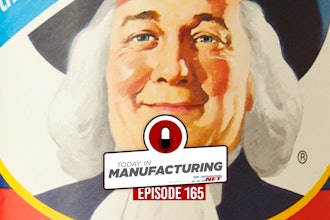The federal investigation of a Metrorail crash last summer that killed nine people has revealed a breakdown of safety management throughout the D.C. area's transit system, including faulty signaling equipment that may have led to the crash.
Investigators have said since weeks after the crash that a control system's failure to recognize the presence of a stopped train may have caused the crash. On Tuesday, the National Transportation Safety Board chairwoman said safety problems in the system went much further.
"Metro was on a collision course long before this accident," Chairwoman Deborah A.P. Hersman said in her opening statements at a meeting on the June 2009 crash. "As our report shows, this was not the first time Metro's safety system was compromised."
Previous accidents, some of which led to employee deaths, were a prologue to the crash, she said.
"Because the necessary preventive measures were not taken, the only question was when would Metro have another accident — and of what magnitude," Hersman said.
The board will hear investigators discuss their findings and vote on the probable cause of the accident. It will also issue recommendations — likely sweeping and costly — on how to avoid similar disasters.
Eight passengers and a train operator were killed and dozens injured when a train heading into downtown Washington from the Maryland suburbs during the evening rush struck a second train stopped before the Fort Totten station. The lead car of the moving train telescoped and overrode the rear car of the stopped train by about 50 feet.
Carolyn Jenkins of Washington, whose daughter Veronica Dubose was killed in the crash, said she came to Tuesday's hearing seeking closure. Jenkins now cares for her two grandchildren, ages 2 and 8.
"I want to hear what really happened. I want to hear the truth," Jenkins said. "I want everyone to stop pointing fingers."
Metro has been working to comply with recommendations the NTSB made in the months after the crash and announced last week that it is putting aside $30 million over three years to carry out whatever recommendations come out of the NTSB's meeting Tuesday. Metro is not obligated to implement the recommendations, and the board has no statutory power to enforce them.
If Metro's track circuits — simple electronic devices meant to detect stopped trains on the tracks — had been working properly, the system would have automatically slowed the approaching train. But the failure of the circuit meant that the driver of the approaching train was receiving messages telling her she could proceed at 55 mph
According to Jim Southworth, NTSB's railroad chief, and a video simulation prepared by the board, the driver of the striking train applied the emergency brakes three seconds after she first could see the train ahead. The brakes worked, but only slowed the train from 55 mph to 44 mph at the time of impact.
Even if the operator — Jeanice McMillan, who was killed in the crash — had applied the brakes the instant she saw the back of the train car ahead of her, it would not have been enough time to prevent the crash, Southworth said.
Weeks after the crash, the NTSB urged Metro to upgrade its train control system, saying daily reviews of the signaling system were not sufficient. A post-crash review found that track circuits failed periodically in the days before the crash.
Two months later, the board recommended that Metro work with Alstom Signaling, which made the track circuit modules, to eliminate the problems that could affect the safe performance of the system. It also recommended that Metro develop a regular testing program for electronic components.
Metro says it now evaluates track circuit performance twice a day, has stopped mixing train control components from different manufacturers and established a new test to find circuits susceptible to problems. Immediately after the crash, Metro changed to manual operation of trains instead of automatic.
This was not Metro's only deadly accident in recent years. Two Metro workers were crushed to death on tracks in January when a maintenance truck backed into them. Last year, two more Metro workers were killed in separate incidents.
There was also a close call in December when several inspectors from the Tri-State Oversight Committee, which monitors safety at Metro, were nearly hit.
Before the hearing began, the NTSB privately screened its animated reenactment of the crash for relatives of victims. Delshawnda King, whose younger sister Lavonda King died in the crash, said watching the video was a powerful moment.
"I already had an idea of what happened," King said, "but this was like seeing it."
___
Associated Press writers Matthew Barakat and Lauren Sausser contributed to this report.






















